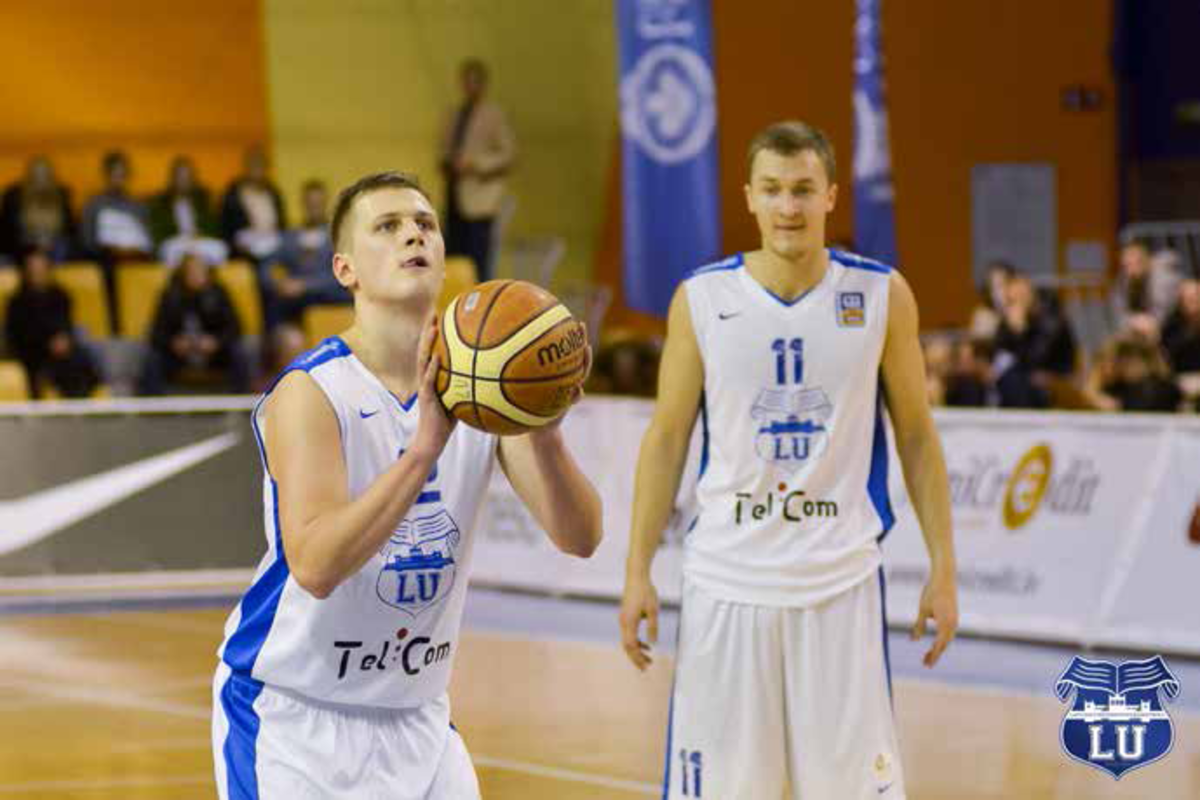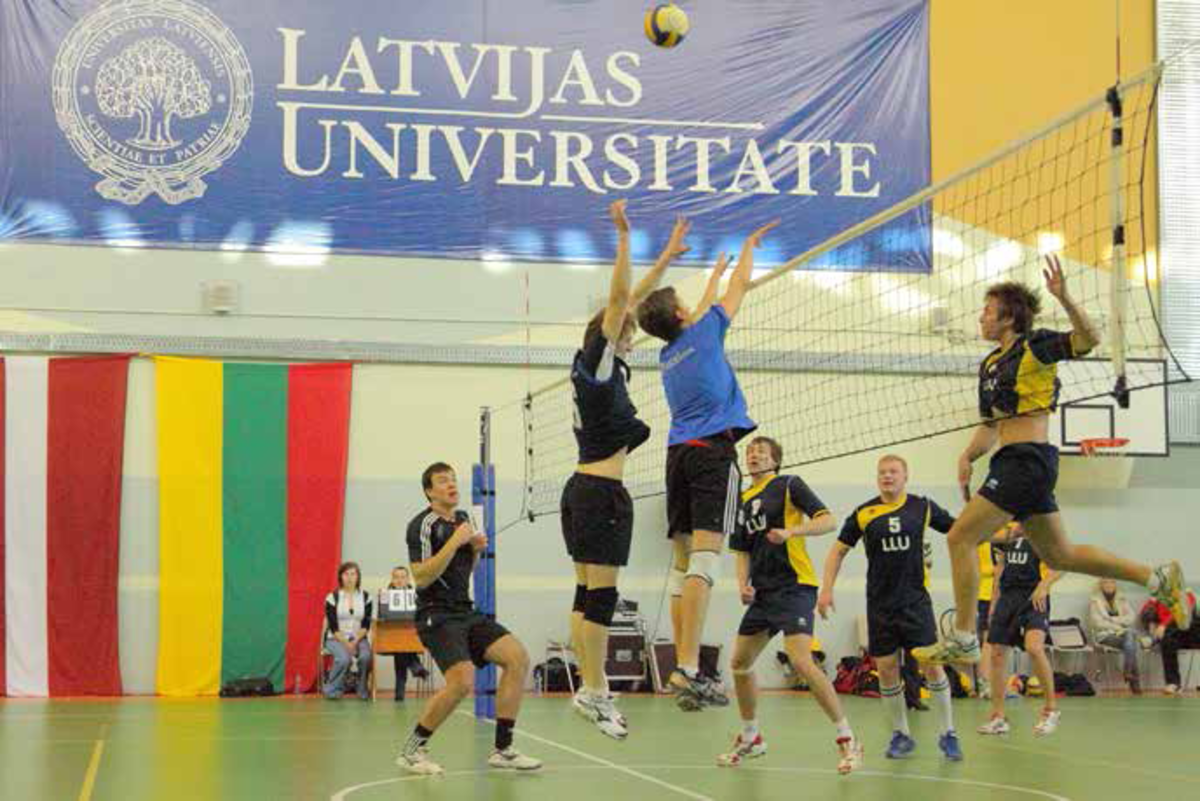
Sport for Harmonious Self-development
Sport attracts people, and the majority of them do sports regularly. It also popularizes important values such as team spirit, solidarity, tolerance, fair game, and encourages personal development.
More than 100 years ago, Pierre de Coubertin held the view that sport is essential to physical development of people and nothing can replace it. He developed the basic document of Olympic Movement – the Olympic Charter that included fundamental principles of Olympism as philosophy of life, exalting and combining in a balanced whole the qualities of body, will and mind, that is also fundamental for students in order to achieve harmonious personal development.
Popularization of sport is very important in the sphere of education, because practicing sports helps to foster such values as knowledge, motivation, skills and perseverance and to form the character. The time devoted to sport at universities gives health and educational benefits. Sports classes encourage active participation of people in social events, thus encouraging active citizenship. Sport not only improves health, but also educates; it is of great value for cultural life and recreation. In addition, it can strengthen external relations of both, state and university. Businessmen acknowledge that new ideas and new partnerships are often created during sports activities. This fact is supported by the survey of student bodybuilders, carried out at the University of Latvia. The majority of them emphasized that the environments of sport and studies are in close interaction: “After intensive studies one goes to a training session to relax and have some fun”.
Nowadays, teenagers imagine their integration into society as a consecutive transition: first school, then the university prepares you for certain educational and professional positions, for finding a job as well as for lifelong independent sports activities. Unfortunately, students lack individual skills and knowledge about how to improve their physical fitness. At school they had from 2 to 3 sports lessons per week, whereas at the university sport is optional, and many students believe that sport is unimportant.
Lack of physical activity and a sedentary lifestyle of students, followed by unhealthy lifestyle in later years can lead to overweight and obesity problems. It can be concluded that teenagers are not well informed on the role of physical activities in the development of physical and functional abilities including capacity to work and good health.
Sport Policy Guidelines 2014-2020 contain a paragraph devoted to students: “Student sport – physical activities and competitions for those studying at higher education institutions with the goal of strengthening and improving health, encouraging physical and mental development, active leisure, social interaction and succeeding in sports competitions”. Moreover, in accordance with Paragraph 1 of Section 5 of the Law On Institutions of Higher Education, “the institutions of higher education shall provide students with the possibility to go in for sports”. Point 2 of Paragraph 1 of Section 50 of the mentioned law provides for rights of students to use objects of sports in accordance with the prescribed procedures. However, there is no legal obligation for higher education institutions to implement sports classes within study programmes, because such rights can be ensured in different ways (for example, by ensuring the availability of sports centres).
It is well known that the best results in sport and studies are achieved by those universities which have a unified complex of study and research facilities, student accommodation, and sports and recreation facilities located on the same premises. Considering the interest of students in using sports infrastructure, it is anticipated that the long-term demand for it will only grow.
Two years ago there was a survey conducted on the sports activities of students. The majority of students (from 82% to 96%) from Riga and regional higher education institutions admitted that their attitude towards sport was positive. Although, in general, students of all higher education institutions engage in sport (77%), there are still students who do it rarely – once a week (13%), less than once a week (7%) or don’t do it at all (3%). Most often students are engaged in running, gymnastics (aerobics, fitness), and sports games.
Among disturbing factors the respondents named lack of time, expensiveness, and a great distance from the place of residence or studies to sports centre as well as the unavailability of sports centres at convenient hours. The majority of students evaluate the sports infrastructure level at their higher education institution as medium. However, it should be noted that the students have no knowledge on whether the sports centre belongs to the university or is rented.
There is a strong consensus among students on the inclusion of sports classes into study process. On average, 89% of students think that sports should be included into course catalogues of all higher education institutions in Latvia.
Physical Activities Recommended for Students
Physical exercises are one of the most effective means of contributing to well-being and looks. They improve not only well-being and physical condition, but also emotional health.
Researches show that lack of physical activities increases the risk of heart diseases, diabetes and cancer by 15-20%. Regular physical activities help to prevent or decrease obesity and maintain optimal body weight. In addition, they increase psychological well-being and reduce stress level, depression, and feeling of loneliness. Students/employees can prove themselves capable, gain confidence, succeed, and fit into society via different sports games, individual classes and competitions. Sport also helps to prevent or reduce undesirable behaviours, for example, smoking, alcohol and drug abuse, as well as reduces violence and contributes to healthy nutritional habits.
From a physiological point of view, the recommended minimum for students is 30 minutes moderate-intensity aerobic physical activity at least five days per week, or 20 minutes high-intensity aerobic physical activity at least three days per week. One must remember that all muscle groups should be developed correctly, so that body can be built up in a balanced way.
Moderate-intensity aerobic physical activity includes brisk walking, during which breathing quickens but one is still able to communicate with a companion. The recommended activities include running, swimming, cycling, in-line skating, skiing, basketball and other.
To keep muscle strength, it is advisable to do special exercises at least two or three days a week (one-day rest in between). One should do 8 to 10 different exercises to involve as many muscle groups as possible. To increase muscle load, additional weight should be used (e.g. dumbbells) so that each exercise can be repeated 8 to 12 times without much fatigue. A perfect muscle strength exercise is to use stairs instead of elevator and to skip one or two steps. At home, one can do push-ups as much as possible in 3-4 rounds. Plank exercise – straight body retention on forearms – is an effective exercise that can be done anytime. It requires minimal time and money investment while helps to achieve visible results – improved posture, balance, flexibility, willpower and liveliness all day long.
Less active students should aim to be physically active every day for at least 30 minutes. It is suggested to start the day with 5 to 10 minutes of morning exercises – stretching and some strength building exercises such as squats, push-ups and other. Training could be shorter and less intensive (pulse rate 130 to 150 beats per minute) after lessons. The intensity of physical activities should be increased by a couple of minutes every day, thus reducing the risk of musculoskeletal system injuries as a result of rapidly increasing physical activities.
Recommendation for active students is to do training programmes for cardiovascular and respiratory system development 45 to 90 minutes long trainings 3-5 times per week. The recommended activities should involve major muscle groups, for example, running, cycling, swimming, and trainings on fitness equipment with one’s own weight. Most attention should be paid to abdominal muscles and training of legs, arms, and shoulder muscles. In view of maintaining health, one should follow food and training regime to avoid overtraining.
Sport as a Lifestyle
Already for 25 years, the subprogramme Sports Teacher of professional bachelor study programme Teacher has been offered at the UL Faculty of Education, Psychology and Art (FEPA). The main courses of the programme are Sports Teaching Methods, Pedagogy, Psychology, Theory and Methods for Physical Training, Human Anatomy, Physiology, and courses on health education. To secure jobs for young specialists, since 2013 students of Sports Teacher programme have to choose the second qualification in another teacher programme offered by the university.
In addition to their studies, students are encouraged to do sport actively at the UL or elsewhere and gain success at the university, national and world levels. They can also organize and conduct various sports events as well as participate in them, thus creating their own dual career. High performance athletes who gained success at Winter and Summer Olympics, World Athletics Championships, marathons and other events have graduated from the UL FEPA and proved that it is possible to combine studies with physical and professional activities. The proper educational environment of the University is essential to study process which enables students not only to gain a qualification, but also to develop a dual career. Students’ attitude towards studies and extracurricular activities is no less important, thus, one should have the desire to combine studies with sports and other activities.
We are proud to highlight that the UL FEPA had many students who purposefully created their dual career during the study process. They obtained not only qualification of Health and Sports Education Teacher and MA in Pedagogy, but also actively engaged and succeeded in sport.
In the Olympics and Paralympics participated:
- 1998 Nagano Olympics – Ilze Ābola (alpine skiing);
- 2000 Sydney Paralympics – Andis Ozolnieks (javelin throw);
- 2004 Athens Olympics – Staņislavs Olijars (110 m hurdles);
- 2006 Turin Olympics – Intars Spalviņš (cross-country skiing);
- 2008 Beijing Olympics – Ainārs Kovals (javelin-throw, silver medal), Aiga Grabuste (heptathlon), Staņislavs Olijars (110 m hurdles), Ieva Tāre (basketball), Kristaps Zaļupe (rowing);
- 2010 Vancouver Olympics – Raivis Broks (bobsleigh), Līga Glāzere (biathlon), Liene Fimbauere (alpine skiing), Intars Spalviņš (coach assistant);
- 2012 London Olympics – Aiga Grabuste (heptathlon), Dmitrijs Jurkevičs (1500 m), Ainārs Kovals (javelin throw);
- 2012 London Paralympics– Andis Ozolnieks (shot put);
- 2014 Sochi Olympics – Raivis Broks (bobsleigh), Inga Dauškāne (cross-country skiing).

 CONFERENCE
CONFERENCE

